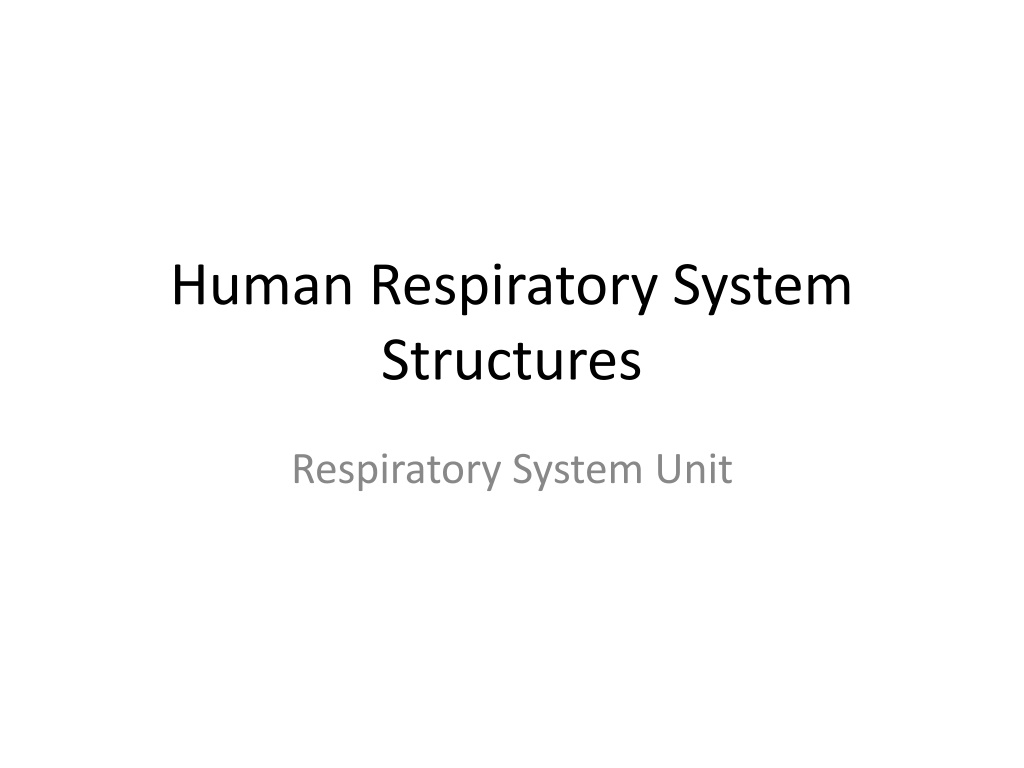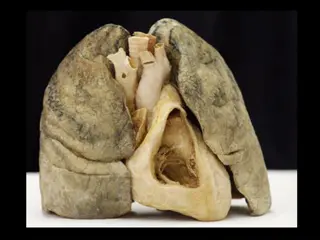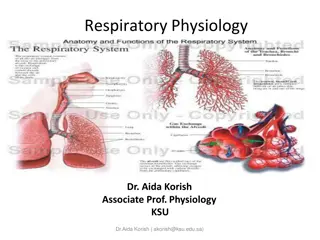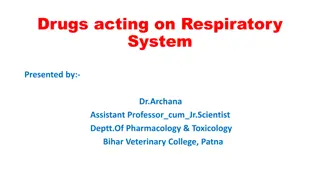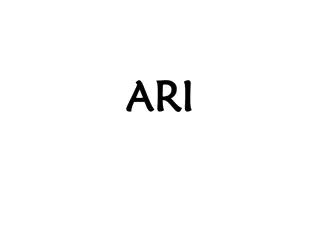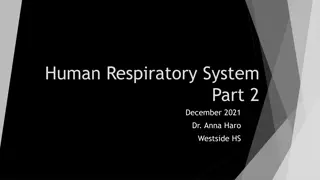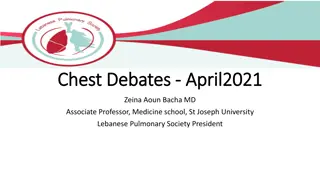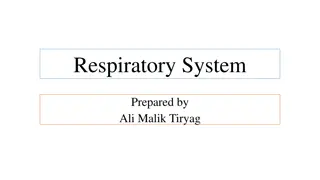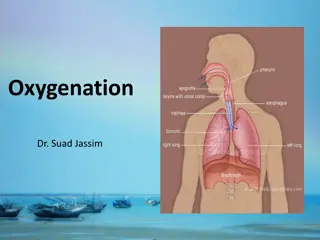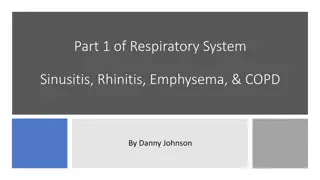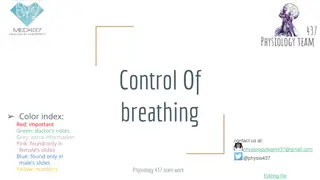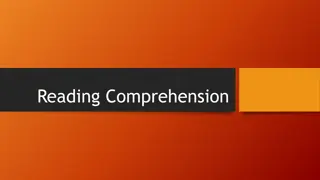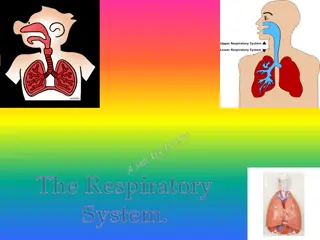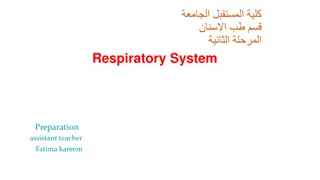Exploring the Human Respiratory System Structures
Delve into the intricate structures of the human respiratory system, from the essential organs like the lungs and diaphragm to the pathways such as the nasal cavity, mouth, pharynx, and trachea. Learn about the functions of key components like the epiglottis, larynx, bronchi, bronchioles, and alveoli, where vital gas exchange occurs. Discover how each part works together harmoniously to facilitate breathing and the exchange of oxygen and carbon dioxide.
Download Presentation

Please find below an Image/Link to download the presentation.
The content on the website is provided AS IS for your information and personal use only. It may not be sold, licensed, or shared on other websites without obtaining consent from the author. Download presentation by click this link. If you encounter any issues during the download, it is possible that the publisher has removed the file from their server.
E N D
Presentation Transcript
Human Respiratory System Structures Respiratory System Unit
Lungs -Main organ of the respiratory system.
Diaphragm -Main muscle that controls breathing by changing pressure in the chest cavity when it contracts. https://www.youtube.com/watch?v=hp-gCvW8PRY
Nasal Cavity/Nose -Place where air enters the body; warms, moistens, and filters incoming air.
Mouth -Another place where air enters the body.
Pharynx -Common passageway of your nasal cavity and your mouth.
Epiglottis -Flap that closes over the trachea when swallowing to keep food from going down the wrong pipe ; remains open when breathing. https://www.youtube.com/watch?v=qrAfEyane2Y
Larynx - Voice box ; makes sounds as air passes through vocal cords. https://www.youtube.com/watch?v=iYpDwhpILkQ
Trachea -Windpipe; tube leading into the chest cavity.
Bronchi -Branches of the trachea that lead to each lung.
Bronchioles -Smaller branches of the bronchi inside the lungs.
Alveoli - Grapelike , Tiny, thin walled sacs where oxygen and carbon dioxide are exchanged.
